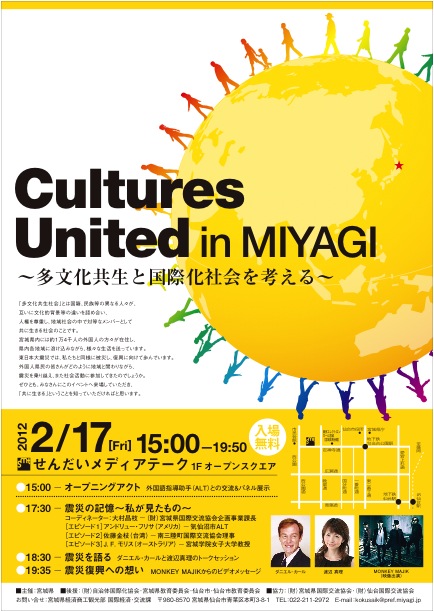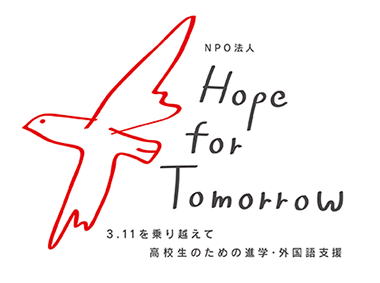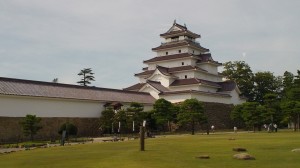WIT Life #191: Multiple marathons and Honolulu highlights
*************************************************************************************
WIT Life is a periodic series written by professional Writer/Interpreter/Translator Stacy Smith (Kumamoto-ken CIR, 2000-03). She starts her day by watching Fujisankei’s newscast in Japanese, and here she shares some of the interesting tidbits and trends together with her own observations.
Tomorrow I head to Kumamoto, my home for three years during JET, to participate in the inaugural Kumamoto Marathon which will be held next weekend. The following weekend I will go up to Tokyo to participate for the fifth time in their amazing marathon. I’m looking forward to not only the running, but catching up with natsukashii friends, eating oishii food and most of all onsen!!!
Speaking of oishii food, 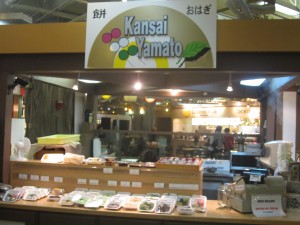 I recently enjoyed the Hawaiian version of wagashi at my favorite shop in Honolulu, Kansai Yamato. This small stall in the food court of the fantastic Ala Moana mall sells handmade mochi in funky flavors like Kona coffee, mango and Oreo as well as Read More
I recently enjoyed the Hawaiian version of wagashi at my favorite shop in Honolulu, Kansai Yamato. This small stall in the food court of the fantastic Ala Moana mall sells handmade mochi in funky flavors like Kona coffee, mango and Oreo as well as Read More
Miyagi AJET to host Feb 17 “Cultures United” event to promote multiculturalism in Miyagi
Thanks to Andy Anderson for sharing this information originally sent by Miyagi AJET Co-President Cameron Peek regarding an upcoming Miyagi AJET event:
“On February 17th we will be holding “Cultures United,” an event promoting multiculturalism in Miyagi, and advertising the efforts of foreign members of the community towards helping rebuild after the earthquake. JET participants are going to be a big focus of the event, and about 10-11 JETs are going to be assisting, putting on booths about their activities in the prefecture. We are also planning on having a display about Taylor Anderson, telling her story.”
Notably, the event will feature JET alum Maynard Plant’s (Aomori-ken, 1997-2000) hit band Monkey Majik.
Note: Because the event is intended for Japanese residents, all information produced for the event is in Japanese only.
JET help needed to secure music grants for Iwate, Fukushima & Miyagi
 Via the JETAA USA website:
Via the JETAA USA website:
JET help needed to secure music grants for Iwate, Fukushima & Miyagi
Margarita Rozenbaoum of Relief International (an international humanitarian nonprofit organization based in Los Angeles) is reaching out the JET alum and JET community to secure music grants for schools in Iwate, Fukushima and Miyagi-ken. This project, called Jam for Japan aims to give scholarships/ grants of $5000 USD to several Japanese schools in the affected prefectures.
Relief International has to date received a very low number of grant applications for this project and the deadline is fast approaching. They are looking to JET alums and current JETs to help identify the schools in need and facilitate connections between then two. The scholarships/ grants are focused on elementary school, junior high and high school levels as well as individual musicians in Iwate, Fukushima and Miyagi. The damage from the earthquake and tsunami does not need to be severe for a school to qualify for the grant.
Interested schools/ individuals must submit the grant application by February 29, 2012. It is available in both English and Japanese:
Hope for Tomorrow launches English language website
Hope for Tomorrow, a JETAA USA Fund grant recipient, just launched the English language version of its website: http://hope-tomorrow.jp/index-e.html
Hope for Tomorrow has provided subsidies to cover travel and other exam-related costs for a 70 students from Takata High School in Rikuzentakata and is funding 244 students from 5 schools for this year’s exams.
Click here for more JETwit posts about Hope for Tomorrow.
JETAA USA Fund Update 02.04.12
Thanks to Jim Gannon for passing on the following update about the JETAA USA Fund:
The JETAA USA donation of $26,700 to Hope for Tomorrow has apparently been extremely effective, allowing Hope for Tomorrow to provide subsidies to cover travel and other exam-related costs for a full 70 students from Takata High School in Rikuzentakata. Altogether, Hope for Tomorrow is funding 244 students from 5 schools for this year’s exams .
Separate from the JETAA funds, they have selected 2 students from Takata High School (and 2 from elsewhere) to take part in a March homestay at the Harvey School in Westchester NY, courtesy of a donation from the Harvey School. In preparation for this, they have arranged online English tutoring for the students and also provided computers to the schools for this purpose.
Click here for more JETwit information and background about Hope for Tomorrow.
Click here for a summary of the JETAA USA Fund disbursements and recipients.
By Kris Gravender (Fukushima-ken, 2002-06) for JQ magazine. Kris was one of eight American JET alums selected for the Tohoku Invitational Program sponsored by the Ministry of Foreign Affairs and the Japan Tourism Agency. This article was originally printed in the Oct. 21, 2011 issue of Chicago’s bilingual newspaper Chicago Shimpo.
What could I do? What could I really do? I was fighting the urge to return to Aizu simply because I knew the possibility for contracting some kind of cancer, but I felt I just had to do something. When the earthquake hit we knew it was bad, but the tsunami made everything worse. Then, to top it all off, Fukushima was becoming a “nuclear wasteland,” according to the news reports we were getting, and there was nothing we could do for the place we love.
My wife, being from Aizu, was distraught for weeks. She called her family, friends she hadn’t talked to in years, and even the local International Association, to get as much news as possible. Her aunt and uncle live in Sendai, and there was no communication from them, not to mention that her brother is a police officer and was being sent into the radiation zone to assist with evacuations. Eventually we were told everyone was safe and healthy, and yet this didn’t do much to make us feel better. We donated money, clothes, and food to the Red Cross, but it just didn’t seem to be enough to make us feel like we were helping.
Then I heard from a friend about a program the Ministry of Foreign Affairs was sponsoring for JET alums to return to their hometowns and tour, as long as they communicated with the outside world about what they saw, felt, and experienced. It was almost as if God was trying to tell me, “Here’s your chance.” My wife and I talked about it for days: If I go, what kinds of problems would I face; what would I do while I was there; could I go into the zone for just a couple of hours to see for myself what was happening; and a whole list of questions and ideas. No matter what the answers became, I knew I had to go.
Former Kesennuma JET to spend honeymoon in Japan supporting relief efforts, seeks fundraising and other support
A request from Andrew Berne (Miyagi-ken, Kesennuma-shi, 1999-2000), reprinted with his permission:
I participated in the JET Programme as an ALT in 1999 and 2000. During that time, I lived and taught in Kesennuma-shi in Miyagi Prefecture. It was a very formative time in my life, and over the years I have remained close with many people in the community. As you are well aware, Kesennuma was devastated by the earthquake and tsunami of March 11, 2011.
My wife Kathleen and I recently got married, and for our honeymoon we are traveling to Japan in April to assist in the tsunami relief efforts and contribute what we can to the town’s recovery. It may not be the most conventional honeymoon, but this is a cause that is near and dear to our hearts. Kathleen and I met while working for the same Japanese company here in the US, and although we are no longer with that organization we still have deep connections to many people in Japan.
We hope to be able to get to Kesennuma for part of the trip, and we are coordinating several fundraising efforts involving family, friends, and colleagues. We are trying to garner as much support as possible from our contacts here as well as in Japan, and we would be very interested in speaking with anyone willing to discuss ways in which we can make this trip have as much impact and meaning as possible. We are also seeking some guidance and advice about lodging & travel options in Kesennuma.
I can be reached at andrewberne [at] gmail.com. If you have the ability to Skype, my username is berneandrew.
Our schedule is as follows:
– April 13-15: Sendai
– April 15-19: Kesennuma
– April 19-22: Tokyo
We’ve planned the trip around the beginning of the school year and sakura season. I’ve also been folding paper cranes like mad, hoping to reach 1,000 by the time we leave for Japan.
JETAA USA Receives Message of Thanks from Hope for Tomorrow
Originally posted on the JETAA USA website by JETAA USA Country Rep Jessyca Wilcox:
JETAA USA Receives Message of Thanks from Hope for Tomorrow
JETAA USA donated part of their Earthquake Relief Fund to the Japanese NPO, Hope for Tomorrow. The main focus of Hope for Tomorrow is to provide financial support for the incurred travel costs associated with university entrance examinations for high school students.
The JETAA USA grant allowed Hope for Tomorrow to open a program in Rikuzentakata. Hope for Tomorrow also provides English language tutoring to students as a thoughtful acknowledgment to the town’s beloved JET ALT, Monty Dickson, whose life was lost in the tsunami of 3.11.
JETAA USA received a letter of thanks for our financial support, which made this effort a possibility for the students of Rikuzentakata. This project would not have been possible without the unification of our JETAA USA community and the hard work of all chapters to raise the funds.
Click here to read the letter from Hope for Tomorrow: http://www.jetaausa.com/2012/01/23/thanks-from-hft/?utm_source=rss&utm_medium=rss&utm_campaign=thanks-from-hft
WIT Life #189: Elizabeth Andoh’s 希望 project
WIT Life is a periodic series written by professional Writer/Interpreter/Translator Stacy Smith (Kumamoto-ken CIR, 2000-03). She starts her day by watching Fujisankei’s newscast in Japanese, and here she shares some of the interesting tidbits and trends together with her own observations.
I recently received an email newsletter from acclaimed Japanese food writer Elizabeth Andoh regarding her newest book project, 希望 (Kibo or “Brimming With Hope”). It will be released on February 28th and features recipes and stories from the Tohoku area, where last year’s earthquake and tsunami hit. Andoh wanted to do her part to help the region recover, and the creation of this book is what she came up with (click on the link below for purchase information). This March, she also plans to launch a new website called Kibo cooking which will be dedicated to Tohoku cookery. See below for a description of Andoh’s project in her own words.
Article: Students in Rikuzentakata Take the Eiken in Memory of Monty
This is a summary of an article originally appearing in the Kahoku Shimpo (Tohoku News) on January 19, 2012.
Students in Rikuzentakata Take the Eiken in Memory of Monty
http://www.kahoku.co.jp/news/2012/01/20120119t33008.htm
Roughly 80% of all middle school students, about 500 altogether, in Rikuzentakata City, Iwate Prefecture, will take the English Language Proficiency Exam (Eiken), in part thanks to support from JETAA USA, whose donation will help to cover the cost of the test. This is one way to bring to life the wish of Montgomery Dickson, who taught English here as an ALT, and who told his students, “I want you to love English.”
Monty worked for the Rikuzentakata Board of Education since 2009 and was an assistant English language teacher at the city’s elementary and middle schools. Immediately after the earthquake on March 11 last year, he evacuated to a park near the board of education offices, but was lost to the tsunami shortly after.
Everyone knew him as “Monty-sensei”, and admired the way he diligently studied Chinese characters (kanji) and performed Japanese folk songs (enka) and comedy skits (manzai) at the board’s social functions. He dedicated himself to improving his students’ English ability, even holding classes for free over the winter break. He was very popular with his colleagues and students.
Despite the fact that the learning environment is still in disarray for middle school students in the city, the number of students registered for the exam on the 20th is about three times higher than this time last year. There have been three prep sessions this month, with many students working through problems from past tests and studying to get ready.
Dickson came to Japan on the JET Program, and after the disaster JET alumni from across the US* collected money and created a fund to support recovery efforts in Tohoku, focusing their attention on Rikuzentakata and on Ishinomaki, in Miyagi, where the other American victim, Taylor Anderson, worked. This aid to the students is one expression of their warm wishes.
Rikuzentakata would also like to establish an exchange with Dickson’s home state of Alaska. Their hope is that in return for receiving so much support from around the world, they will become more outward looking themselves, and that their children become able to go to Alaska and speak in English about their memories of Monty and their own experiences in the disaster.
*JETwit Note: While the article specifically references money raised by US JET alumni for the JETAA USA Fund, it’s worth noting that current JETs, JET alumni and JET Alumni chapters all around the world donated and helped raise money in myriad other ways through various channels and organizations.
***********************
津波犠牲ALTの思い忘れず 陸前高田の中学生、英検挑戦へ
東日本大震災で甚大な被害を受けた岩手県陸前高田市で20日、市内全中学生の8割に当たる約500人が英語検定(英検)を受験する。市教委が支援団体の協力を得、受験料を全額補助することにした。異国の日本を愛し、日本語教師を夢見ながら、津波で犠牲になった同市の米国人男性英語指導助手(ALT)の「英語を好きになってほしい」との願いが生かされた。
ALTはモントゴメリー・ディクソンさん=当時(26)=。2009年から陸前高田市教委に勤務し、小中学校で英語の授業を補助していた。昨年3月11日の地震発生直後、市民会館内にある市教委からいったん近くの公園に避難したが、その後津波に襲われた。
「モンティ先生」の愛称で親しまれた。漢字の勉強にも人一倍努力し、職場の宴会で演歌や漫才を披露するなど周囲に溶け込んでいた。日本人の婚約者もいたという。
堪能な日本語で児童生徒や教員らとも積極的に交流、冬休み中には無償で子ども向けの英語教室を開催、英語力向上に尽力した。
同僚の熊谷卓さん(25)は「校外で芸術鑑賞中、こっそり入ってきたモンティさんに気付いた子どもたちが大騒ぎし、鑑賞どころでなくなった」とその人気ぶりを振り返る。
同市では被災で中学生たちの学習環境が整わないにもかかわらず、20日の英検申込者数が昨年同時期と比べ、約3倍に増えた。今月、受験対策講座が計3回開かれ、多くの生徒が過去の問題などに取り組んだ。広田中2年の臼井春香さん(13)は「もっと英語を好きになり、理解できるようになりたい」と話す。
ディクソンさんは、国のJETプログラム(外国青年招致事業)で来日した。震災後、事業に参加した米国人OBたちが全米で募金活動などを行い、復興支援基金を設立。現役ALTが犠牲になった陸前高田市と石巻市で重点的に教育支援しようと、支援団体などに寄付した。今回の補助にはこの善意が充てられる。
市教委は、ディクソンさんの出身地アラスカ州との交流も視野に入れる。学校教育課は「世界から支援を受ける今だからこそ、世界に目を向けてほしい。教え子たちがアラスカ州で、彼との思い出や震災の経験を英語で話せたらいい」と期待している。
2012年01月19日木曜日
JET Paul Yoo seeks donations to help Sendai orphan attend college
See below request from Akita Prefecture JET Paul Yoo, founder of volunteerAKITA.
JETwit note for context: Paul has been going above and beyond the call of duty in terms of volunteering and organizing volunteers in Tohoku. JETAA USA recognized his efforts in providing him funding to help defray costs associated with organizing volunteers to go and help with clean-up in affected areas in Tohoku.
Hi my name is Paul Yoo, a 3rd year JET in Akita-ken and Co-founder of volunteerAKITA and The Fruit Tree Project (www.volunteerakita.org). Along with our on-going activities, we are also involved in the “Smiles & Dreams:Tohoku Kids Project” led by Living Dreams/SmileKidsJapan (www.livingdreams.jp and www.smilekidsjapan.org).
Right now, we are working as Home Communication Managers (HCMs) to two orphanages in the Sendai area. Our role is to act as contacts for the orphanages, and relay any needs they may have.
What we need right now: A boy, in his 3rd year of high school (his final year), at one of the orphanages we are in contact with, has become the first orphan there to ever express interest in going to college. He wants to attend Yamaguchi Hukushi Bunka Daigaku (University of Human Welfare and Culture) and study hoiku ka (child care). It is a four year program and the university will cover tuition for the first 2 years of the program, along with 50% of the 3rd and 4th years.
Our goal is to raise¥1,154,000 which includes ¥970,000 in tuition costs for the 3rd and 4th years, along with an ¥184,000 mandatory insurance cost over 4 years.
We are currently accepting donations for the scholarship fund we have set up. After collecting the sufficient funds, we will then transfer the money to an account that will be handled by the orphanage.
We welcome any grants, scholarships, or personal donations to get this young man to college, and most importantly doing it without leaving him in debt after he finishes school, since in most cases, once an orphan has finished high school, he is on his own.
It is truly inspiring that he plans to go to college and is the first from his orphanage to show interest in doing so. Successfully sending him to college would be such an amazing gift, and would inspire other orphans to follow in his footsteps, knowing that they too can receive a college education, and strive to become whatever they want to be in the future.
If you have any questions regarding this proposal or can help us out, please contact me.
Much Love,
Paul Yoo
E-mail: paulharimyoo [at] gmail.com
2012 JET Memorial Invitation Program (JET MIP) for US High School Students
Via the Japan Foundation Los Angeles website. This program is for any high school students interested in Japan. The program was created by the Japan Foundation to honor the memories of JETs Taylor Anderson (Miyagi-ken, Ishinomaki-shi) & Monty Dickson (Iwate-ken, Rikuzentakata-shi) who were lost in the tragic events of March 11th 2011.
2012 JET MEMORIAL INVITATION PROGRAM (JET MIP) FOR U.S. HIGH SCHOOL STUDENTS
http://www.jflalc.org/jle-12-jet-mip.html
The 2012 JET-MIP program will provide 32 high school students with the opportunity to go to Japan for two weeks as a group to meet Japanese students, experience Japanese culture, and study the language. It was created in 2011 in memory of the two beloved American teachers of English who lost their lives in the earthquake and tsunami on March 11, 2011: Taylor Anderson (Ishinomaki, Miyagi) and Montgomery Dickson (Rikuzen-Takata, Iwate). The program is open to 11thand 12thgraders who are currently learning Japanese, and it seeks to honor the principles which Taylor and Monty valued during their lives.
The trip is an educational visit throughout Japan including Miyagi or Iwate. It lasts 18 nights and 19 days, including pre-visit orientation and post visit wrap up in Los Angeles. A total of 14 nights and 15 days are in Japan. Its purpose is to:
-
Encourage American high school students to study Japanese
-
Encourage youth exchanges such as the JET program as an option for students
-
Create a network of students for the future
To be eligible, participant must:
-
Be a U.S. citizen
-
Be learning Japanese as a foreign language
-
Be an 11th or 12th grade student during the 2011/2012 school year
-
Have completed at least two years of Japanese-language courses at a U.S. high school
Note: Students whose high school does not offer Japanese-language course and are currently taking Japanese classes at an accredited educational institution (such as at a community college) may still apply to the program. However they must be endorsed by his/her Japanese teacher.
-
Intend to continue Japanese-language education in future
-
Be a member of the Japanese National Honor Society (JNHS) or have equivalent academic scores (Japanese GPA: 3.5 or higher; overall GPA: 3.0 or higher)
-
Have not visited Japan for more than seven consecutive days in the past three years
-
Be able to take part in the entire itinerary, including the pre-visit orientation, the post-visit wrap-up in Los Angeles, the group airplane trips, and the group hotel visits.
-
Be in good physical and mental health
-
Have taken the National Japanese Exam (information can be found on the NCJLT website, athttp://www.ncjlt.net/).
Note: You must register for the 2012 exam by January 31, 2012.
-
Have the consent of a parent or guardian.
Itinerary (tentative):
July 8 through July 26, 2012
Activities: Japanese language lessons, Introductions to Japanese culture and society such as geography, kimono, taiko drums, teen slang, anime, manga, high school visits, field trips to Kyoto, Osaka and Tohoku area (Miyagi or Iwate) and a homestay in Osaka
Costs:
The Japan Foundation will pay for accommodation, airfare, food, and admission fees in Japan and during orientation in Los Angeles.
Participants Requirements:
-
Participants will not be allowed to deviate from the arranged events and locations, nor have non-participants accompany them.
-
Participants are required to write an essay in Japanese within one month of the program’s conclusion.
Application Procedure:
-
Application forms will be available on our website (www.jflalc.org) in February. Tentative application deadline is April 13, 2012 (Friday).
-
NJE registration and application materials must be submitted by the applicant’s Japanese-language teacher.
-
Each school can only submit ONE Application.
The above information may be changed without prior notice.
Rikuzentakata, Iwate: 9 months after the tsunami by Alison Brown
******************
Thanks to Vancouver-based JET alum Alison Dacia Brown (Iwate-ken, Rikuzentakata-shi, 2005-08) for sharing this article she wrote with JETwit, which also appears (with photos) on page 8 of the latest issue of the JETAA British Columbia Newsletter. It is a follow-up to a previous article she wrote titled “Rikuzentakata.”
Rikuzentakata, Iwate: 9 months after the tsunami
The last article I wrote for JETAABC was just a few weeks after the tragedy happened. I lived in Rikuzentakata, a small city in Iwate prefecture on the coast, whose location and landscape could not have been worse on March 11th. Over nine months has passed, and even though Rikuzentakata, or Takata for short, is far from being fully healed, it’s unbelievable what has been accomplished to make the city liveable again in such a short period of time.
Temporary housing has been built. Grass has begun to grow again. Debris has been cleared. The Tanabata festival has been celebrated. A Lawson has been opened. Possessions have been returned to their owners. Possessions thought to have been lost forever. As an example of this, could you imagine losing your home and possessions and barely escaping with your child and a few clothes? Could you imagine the happiness you would feel when a volunteer is able to give you a memory card with pictures on it you thought were lost forever? There was one volunteer department responsible for this ‘Photo Recovery Project’. In an online video, I smiled when I saw those blue laundry hangers with the clips holding photos that had been recovered and carefully cleaned.
I was devastated when I saw the images of the destruction in the days that followed the tragedy. What was worse was seeing a video taken of the city from a helicopter. It wasn’t just destruction; it looked apocalyptic. I recognized about three buildings which were some of the biggest: The Capital Hotel, City Hall and the building that housed Daiso and the town supermarket, Maiya. Even though they were spared from the waves which swept mostly everything away, they seemed to stand there like ruins, completely gutted from the inside. In the days that followed, a closer look at these buildings showed trapped trees, cars, and probably people which were swept into their paths. Boats on top of buildings seemed commonplace.
I keep in regular contact with my friends in Rikuzentakata and Ofunato, the city next door. In addition, I do some volunteer editing on the Save Takata website. I feel like doing all these things is keeping my spirits up. What also keeps my spirits up is hearing all the stories about my town from volunteers and friends. The day-to-day activities that show that life really does go on are amazing. One of humankind’s best qualities is the ability to adapt, and the residents of Rikuzentakata have certainly adapted and carried on. Enzo Caffarelli, a good friend and former ALT from Takata, has since returned with the volunteer group All Hands. I remember messaging him back and forth on Facebook after he arrived and he told me was doing some work at a rice harvest cooperative, and being managed by a dirty old Japanese man who loved women and sexual innuendos. Awesome. Read More
Here are links to two videos on YouTube that Monty Dickson’s sister Shelley let us know about. The first video shows Monty briefly walking in front of the Rikuzentakata City Hall building shortly before the tsunami struck (1:15-1:32). The second video was taken two days after Shelley left Japan (which she visited after the tsunami) and shows footage of Monty’s building.
- http://www.youtube.com/watch?v=n5iXBaLM7mI&feature=player_embedded
- http://www.youtube.com/watch?v=gidOApxxo_Q&feature=player_embedded
Thank you to Shelley for sharing the videos as well as her words and thoughts about Monty and the video, used with her permission from two separate emails:
****************
November 21, 2011 (originally sent to family and friends on an earlier date)
I do not know who may want to watch this video, some of you I know have already seen this. I have viewed it many times and always find myself talking to the image on the screen, begging him to run or turn around and go to the roof. It is a video of Monty’s last moments. I only watch from 1:15 to 1:32. That is all I need or want to see. I think of the times we all scoured through videos hoping to catch a glimpse of him or find him in a picture. Now this is the only 15 seconds of video from that time that I can watch. It is as if stopping it at 1:32, I have some power to freeze time and stop what is to come.”
Here is the video. Monty walks out of his office building at 1:15 in the video. He is wearing his yellow coat, grey hat, glasses and as always carrying his green, bike messenger bag. This was normal attire for him so to me he is easily recognizable. He walks across the street to the city hall building and hesitates, then turns back and walks up the street (evacuation route) passing the cameraman again at 1:30. Monty looks directly at the cameraman at 1:32. The tsunami comes within seconds so I know he did not get far. I will forever wish he had not hesitated and instead gone into the city hall building. He would have gone to the roof with the others. The cameraman most likely did not survive either. The video then resumes with a different cameraman on top of the building (City Hall) that Monty almost entered. When the cameraman walks across the roof to view the other side, Monty’s office building is under water and no longer visible.
When we were in Japan we stood at this very spot viewing this video on his friend Kumagai’s iphone. It was haunting. I placed flowers at this building where his office was located.
The second video was taken only two days after we left Japan. It is exactly how we saw it, even the bundle of papers tied in a yellow cloth still sit near what used to be the door of Monty’s building. The cameraman just misses the spot I placed the flowers when he pans in the beginning of the video.
Oh the powers I wish I had.
Shelley
**********
November 28, 2011
We first viewed this video in April while we were in Japan. At the time it was poor quality given the bright sun and viewing via iphone, but we were certain we were seeing Monty. I just recently decided to find it again since I wasn’t sure myself if I wanted to see it again. The video provided some answers for us as to where he was (exactly) at the time the tsunami hit. I think it would do the same for any of his friends or colleagues and have forwarded it to as many as I can. Still it is hard to watch. It had always been my fear that he was scared and I was not able to help him in any way or remove that fear from him. He is so calmly walking, simply evacuating as the announcements plead.
I still wonder why walk or run from an approaching tsunami when a vertical evacuation would be more immediate? I think the video could offer some thought as to what not to do perhaps, in an emergency such as this and it should be shown to future JETs.
I notice, in the second video taken after the fact, the tile on the exterior of the building seems undamaged and in fact, still shiny. The concrete has visible damage, scrapes and gouges while the tile seems unscathed. A future building material to be used more predominately I hope. Designated evacuation buildings measuring at least four stories with the exterior designed in tile. Just a thought.
Monty never wanted me to worry about him and he always made every effort to ease my mind when something happened there. He always called to tell me he was alright, that I will hear about it in the news tomorrow, and not to worry. I was certain I would get that call from him, “Hey Shell, it’s Monty” as always. Sometimes he called at 1:00 a.m. because he would forget the time difference. We would talk anyway. I miss my brother. I know a lot of people miss him, he touched so many. I am encouraged to see so much interest in his work and so many still inspired by him.
Shelley
JQ Magazine: JET Turned Laborer – Giving Back as a Volunteer in Post-Disaster Japan
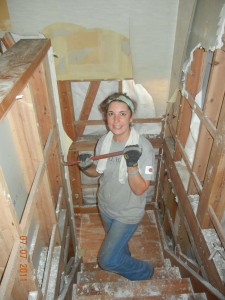
Rachel at work "gutting," or removing drywall panels and screws, in the stairwell of Wakadaisho, a sushi restaurant undergoing renovation in Ofunato, Iwate.
By Rachel Vigil-Garcia (Fukushima-ken, 2001-02) for JQ magazine. Rachel works at the American Center for Learning in Chula Vista, CA. Contact her at ray3vigil13 [at] yahoo [dot] com.
Eight months have passed since a huge earthquake and tsunami crippled Northeastern Japan with mind-numbing destruction. In March, news video beamed entire towns going under, with cars and homes lifted in the deluge. But today, why does it seem like so many have begun to forget about this disaster? I know the JET and JET alumni community are an exception to this. Still, I hope that by sharing my recent experience I can encourage sustained support to that wonderful island nation and its ever-gracious inhabitants. It’s much too early to be letting Japan’s victims and survivors, and the hard work ahead, fade into the background.
When news of the events of March 11 reached my living room in San Diego, it took hours for the magnitude and scope of the tragedy to sink in. I sat, scrolling through unbelievable Internet images with an eerie sense of irony as my mind brought me back 10 years. Suddenly, it wasn’t March 11, but September 11. I wasn’t in San Diego. I was on a tatami mat in my apartment in Koriyama, as a JET in Fukushima. The 9/11 terrorist attacks gripped the world in complete surprise. I was glued to NHK and local Fukushima TV, wondering how something so awful could be going on back home while I was thousands of miles away.
The realization of this strange twist of events compelled me to take action this summer. I was an ALT in Japan during the 9/11 terrorist attacks. Ten years later I felt the same helplessness and fright for Japan, a nation not mine by birthright, but one that had become a second home. With growing conviction and a sense of obligation, I vowed to find an organization accepting U.S. civilian volunteers. I was determined to help Japan recover and rebuild.

